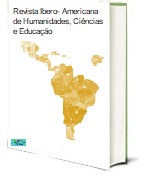CHALLENGES AND PERPLEXITIES IN EMERGENCY CARE FOR THOSE ATTEMPTING SUICIDE
DOI:
https://doi.org/10.51891/rease.v8i6.5895Keywords:
Suicide. hospital Emergencies. Public policies.Abstract
Qualitative, field research. General Objective: To analyze the conceptions held by professionals about caring for people in suicide attempts. Specific: List the feelings, opinions and emotions expressed by the participants around the care of people who have attempted suicide; to verify the experiences narrated by the participants in relation to care for people in situations of suicide attempts and deaths; survey the procedures most frequently used in the care of people who have attempted suicide. Method: Data collected through the “Snowball” technique, with an online form and analyzed using Content Analysis. Results: The analytical categories were: 1. Impact; 2. Dialectics of reasons for trying to die; 3. Illegitimate Emergency; 4. The suffering of those who attend. Conclusion: there is still stigmatization in relation to the person with suicidal behavior by professionals The absence of psychologists in primary care impacts urgent/emergency services. Knowing the conceptions of health professionals is important for the elaboration of public policies for the mental health care of the population, as well as for restructuring urgency and emergency services, with training for the teams.
Downloads
Downloads
Published
How to Cite
Issue
Section
License
Atribuição CC BY

